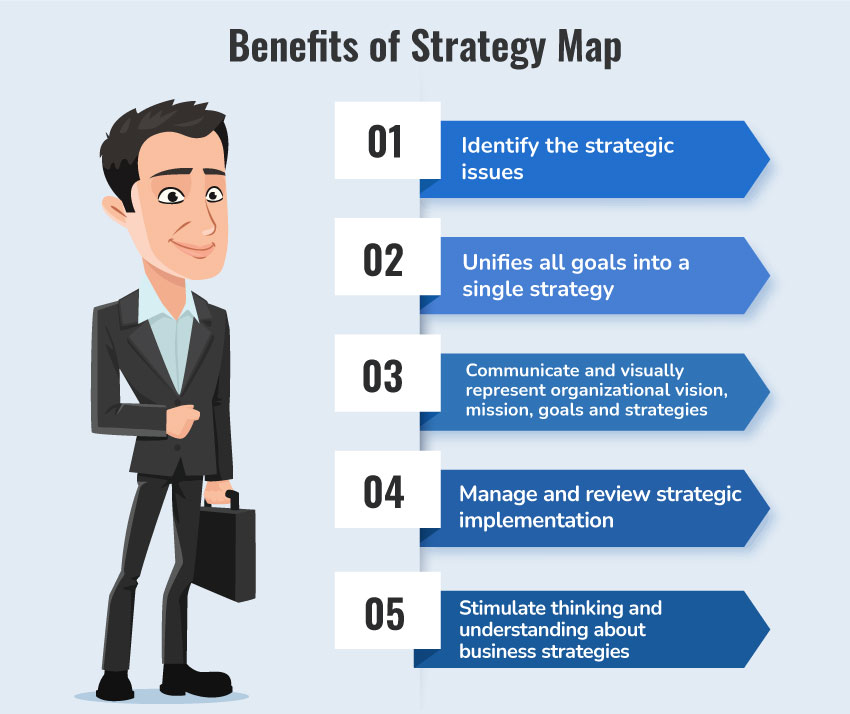Table of Content
Introduction to Strategy Map
A strategy map is a visual strategic planning model that helps the organization to visually represent its organizational strategies, objectives and develop cause and effect relationships between strategic objectives. The use of this strategic planning model helps to clearly communicate the strategic plan and achieve high-level business objectives. The Strategy Map is created by the organizations through the strategic planning process adopted during the period of strategy check-in and meetings.

The need for Strategy Map
Strategic Map is important for the organization as it can help to improve the strategic communication in the organization and provide a visual representation of the overall performance of the organization. Strategic Map can also help the organization to achieve its goals by determining the action plans and strategies. Strategy Map is an extension of the Balanced Scorecard that helps to effectively manage and implement various business strategies.

Besides this, the use of the Strategic Map also helps to uncover various gaps in the organizational strategies before initiating various actions which also helps in improving the overall performance of the organization. Along with this, the Strategic Map also helps the organization to determine how the intangible resources of the company such as employee knowledge, customer satisfaction, training programs, etc. generate strategic value which also helps to improve organizational performance through better management of various resources. The use of this strategic model also helps in tracking the organization’s progress towards the set goals and adjusting the organization’s performance to mitigate the performance gaps. Thus, Strategic Map can also be defined as an important tool for Gap Analysis which helps to identify and mitigate various performance issues at the workplace. The employees of the organization can also view their contribution to the achievement of the organizational goals which also helps to drive better performance outcomes through higher employee motivation.
How to prepare the Strategy Map?
The organization can develop the Strategic Map through a complete assessment of the organizational strategies and performance goals. While developing the Strategic Map for the organization, you first need to consider the high strategy elements of the organization which include the mission, vision, and goals of the organization.
The Strategy Mapping process of the organization begins when the organization determines the right perspectives and the goals that the organization aims to achieve to ensure continuous improvement. The simple and easy-to-understand goals are required to be communicated under this model to provide clear information on the organization’s objectives.
While preparing the Strategy Map, the individual is required to define the organizational goals for all the four perspectives which include financial, customer, internal process, and learning and growth. After this, the cause and effect relationship can also be established between the strategic objectives and strategic results.
Strategy Map real example
Let’s continue with the example of Adidas to prepare the Strategy Map. The Adidas Strategy Map is prepared as follows-


The above visualization of the Strategy Map of Adidas depicts that the vision of Adidas is “To become sports market leader with performance guaranteed products for athletes”. The mission of Adidas is “To attain a leading position in the sporting goods industry with brands built on a passion”. The next step in the Strategy Map is creating the four perspectives and determining the strategic priorities for achieving business goals. The strategic priorities of Adidas include increasing brand credibility, customer satisfaction, brand awareness, and sustainability. The business goals of Adidas further show that the key aim of Adidas in the current times is to achieve the leading position in the sports market by ensuring better operations management and improving the overall financial performance of the organization.